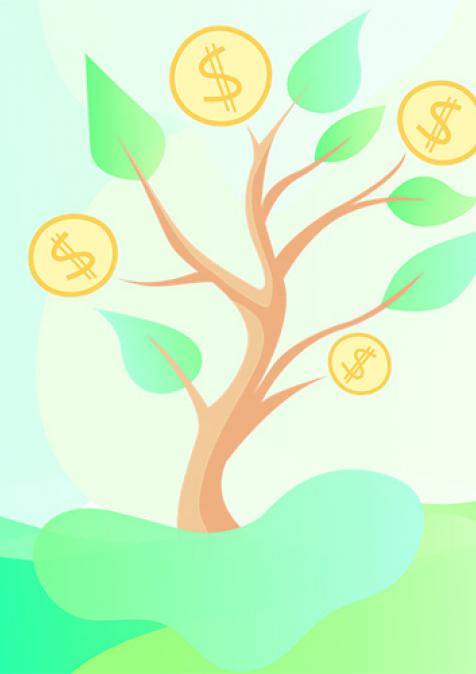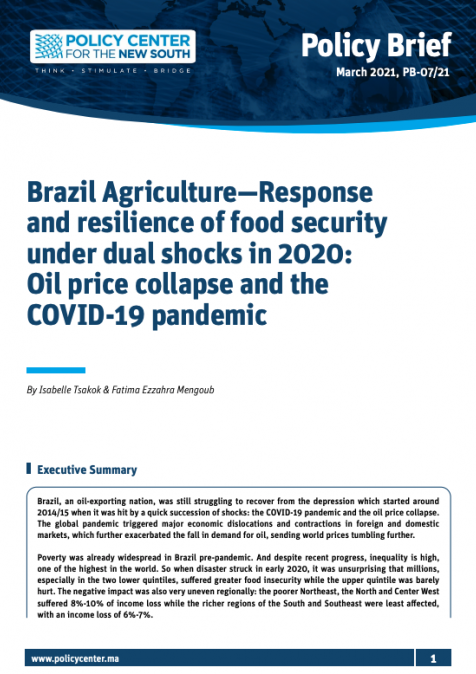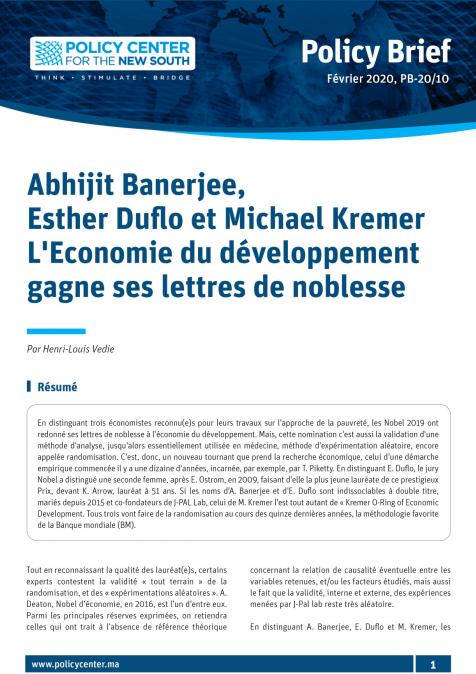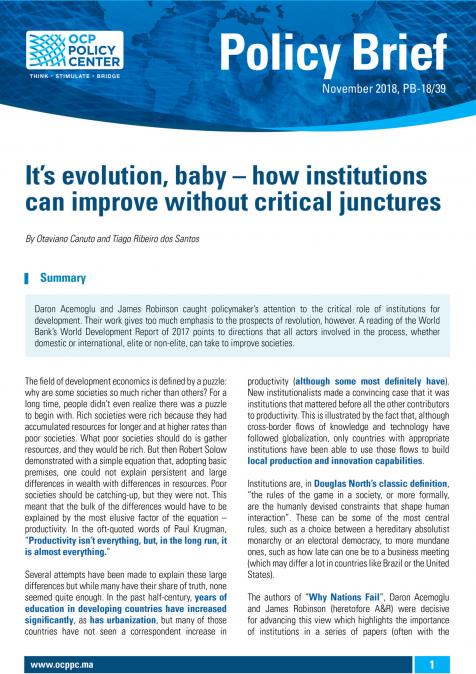Publications /
Opinion
The Multidimensional Poverty Index provided for the UNDP (United Nations Developed Program) looks beyond monetary income and shows how poverty is the experience of multiple and simultaneous deprivations. People can fall behind in terms of health, education, and living standards, with challenges including lack of access to drinking water, sanitation, adequate nutrition, or primary education. Those who are deprived of at least one third of the index’s components are classified as multidimensionally poor. The 2018 figures, which are now closely aligned with the United Nations Sustainable Development Goals, cover almost three quarters of the world's population that there are poor.
The latest figures show a clear picture of all those who have been left behind by development, but also indicate that progress is possible through an appropriate approach. Approximately 1.3 billion people live in multidimensional poverty, which represents more of the middle of the population. Of these 1.3 billion, almost half, 46 percent, live in severe poverty and suffer shortcomings in at least half of the indicators included in the index.
Much remains to be done but there are encouraging signs that poverty can be and is being fought. In India, the first country for which progress has been analyzed over time, 271 million people emerged from multidimensional poverty between 2006/08 and 2017/18. The poverty rate has been reduced by almost half, falling from 55 percent to 28 percent over the ten year period.
Through an analysis of the behavior of poverty and inequality at a global level, a World Bank study1 proposed high-impact strategies in the fight against these factors. Among them is giving access to quality education and progressive taxation. The study also found that extreme poverty continues to decline in the world despite the plight of the world economy.
However, to achieve the goal of ending multidimensional poverty by 2030 it is necessary to implement measures aimed at reducing the high level of inequality.
World Bank researchers identified five high-impact strategies, that is, policies whose effectiveness in increasing the income of the poor, increasing their access to essential services, and improving their long-term development prospects, has been widely demonstrated.
The first strategy is "development and nutrition in early childhood", aimed at the first 1,000 days of life (2.73 years) of children, because nutritional deficiencies and lack of cognitive development during this period can cause learning delays and lower school performance in later stages.
The second strategy is "universal access to quality education". Although access to education has improved in recent years, it is now necessary to go further and ensure that all children receive a quality education. Priority should be given to universal learning, knowledge and skills development, and teacher quality.
The third strategy is “universal health coverage”. According to the World Bank, with affordable and timely coverage of healthcare services, inequality is reduced and the capacity of people to learn, work, and progress is increased.
The fourth strategy is "progressive taxation". Fair, progressive taxes enable the financing of government policies and programs that are necessary to improve conditions and transfer resources to the poorest inhabitants. Tax systems can be designed to reduce inequality while keeping costs at a low level.
The fifth strategy is the "rural structure", covering the construction of rural roads, reduced transportation costs, connecting farmers with markets, and promoting access to schools and health centers.
In other words, it is rare that there is a rapid decrease in rural poverty without rapid structural and/or rural transformation, according to studies published by the International Fund for Agricultural Development (IFAD)2.
Some of these measures can quickly reduce income inequality and others generate benefits more gradually, but none is a miraculous solution. Despite the financial crisis, in 60 of the 83 countries covered by 2018 poverty & shared prosperity report by de World Bank, between 2010 and 2018, there was an increase in the average income of the poorest 40%. It is important to note that these countries represent 67% of the world's population, like India, Vietnam, Pakistan, Mexico, etc.
It is important to understand this context, since there are very laudable initiatives that seek to help reduce poverty or even reverse it. During my participation in the Paris Peace Forum 2019, an initiative, implemented by BRAC USA, caught my attention: the Ultra Poor Graduation Program.
This program is implemented by local organizations in each country supported by the BRAC Development Institute what is a development success story, spreading anti-poverty solutions born in Bangladesh to 11 other developing countries in Asia, Africa and the Caribbean. Seeing the creativity, ingenuity, and drive in each person, BRAC is a global leader in providing opportunities for the world’s poor and provides people living in poverty with the tools they need to create the life they want for themselves, their families and their communities.
This program has the following components that are adjusted to the context of each country:
Consumer support: in the form of cash or food transfers.
Asset transfers: often goats or chickens, or money to invest in small-scale trade.
Livelihood training: beneficiaries are trained with skills to generate a sustainable income with the new asset (for example: rearing livestock, trading, selling vegetables or honey).
Savings component: beneficiaries open individual savings accounts at local banks, post offices, or are encouraged to save with rotating savings and credit organizations.
Health component: services range from health education to aid in accessing government services.
Additional services: veterinary consultations for livestock, business development training.
All beneficiaries who access this program are monitored throughout the program, which lasts two years, after which they graduate.
Poverty Worldwide
According to the World Bank's report, almost 800 million people subsisted on less than US $1.90 per day in 2018. This figure represents about 100 million fewer people in multidimensional poverty than in 2017. Progress in reducing poverty was recorded primarily in East Asia and the Pacific, particularly in China, Indonesia and India.
In Latin America, between 2005 and 2015, poverty decreased from 25.5% to 10.9%, but since 2013 the pace of this reduction has been much slower because of the economic slowdown.
If we take examples like BRAC initiative we can see that there are methodologies and initiatives that can help us to have a better quality of life for all. It can be inferred from this program that the organization has helped reduce poverty in many of the countries where they have an impact. This is only achieved when the community is empowered and taught that it is possible to get out of the situation they are in, and that not everything should come from the government sector.
1.- “World Bank Group. 2013. World Bank Group Strategy. Washington, DC. © World Bank. https://openknowledge.worldbank.org/handle/10986/16095 License: CC BY-NC-ND 3.0 IGO.”
2.- Benfica, R. & Squarcina, M. & De la Fuente, A., 2018. "IFAD RESEARCH SERIES 25 - Structural transformation and poverty in Malawi: decomposing the effects of occupational and spatial mobility," IFAD Research Series 280074, International Fund for Agricultural Development (IFAD).
Carolina Zuheill Rosales is an Alumna of the 2018 Atlantic Dialogues Emerging Leader Program (ADEL).
The opinions experessed in this article belong to the author







